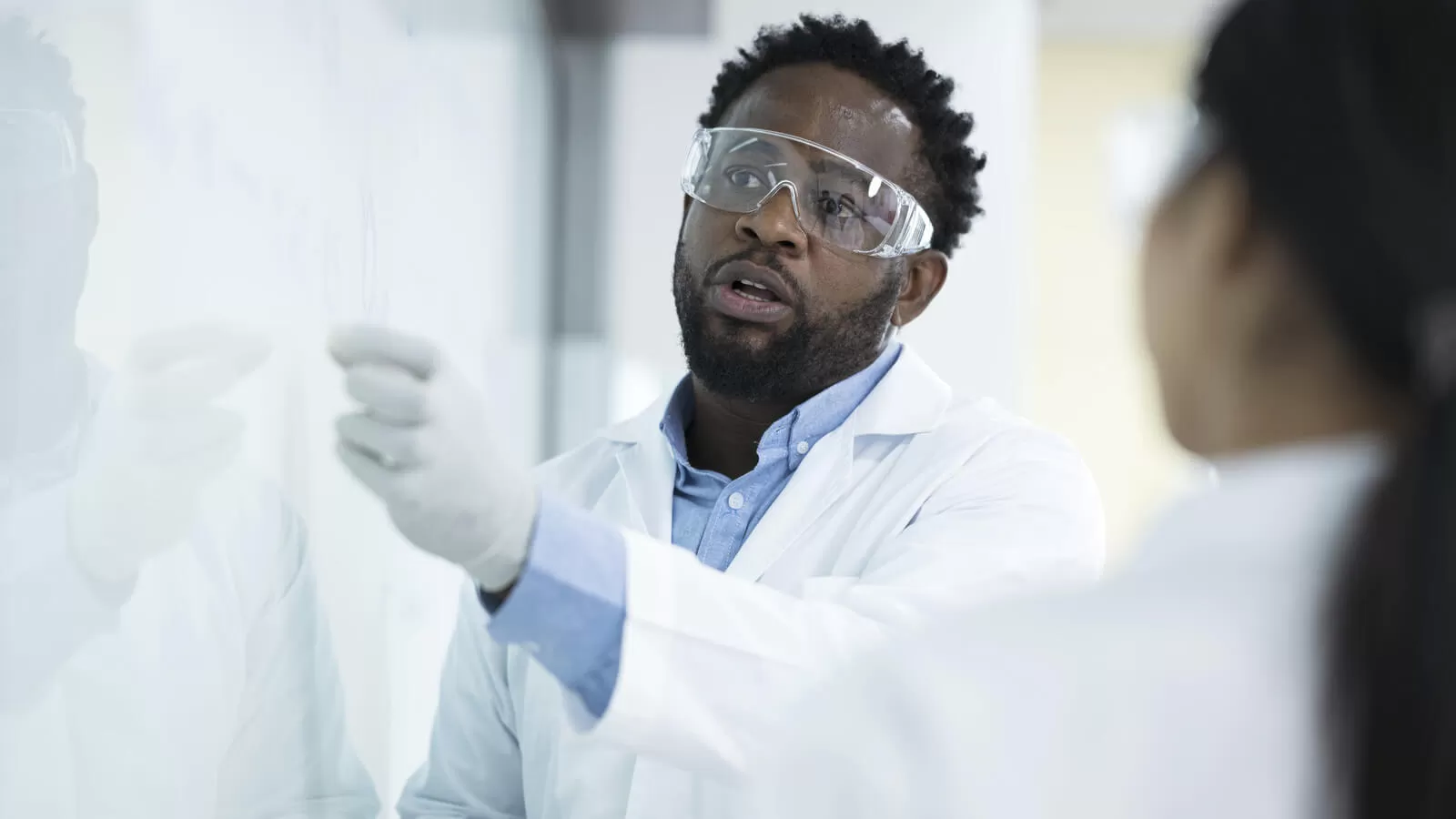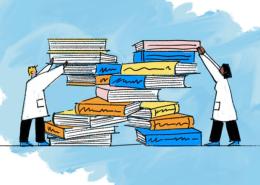The Challenges of Defining, Understanding, and Addressing Long COVID

Years have passed since COVID-19 was declared a global pandemic. And though some immunity (acquired by vaccination or through a combination of vaccination and prior infection) allows people to reincorporate some of the lifestyle and activities that they used to enjoy, the virus continues to significantly impact patients, health systems, and economies around the world. In addition to the devastating effects that acute infection can have on those at high risk for severe illness, so-called long COVID also occurs in people who do not have increased risk factors, as well as in those who were mildly ill or asymptomatic during their initial infection.1,2
Healthcare professionals recognize long COVID, also known as long haul COVID, post-COVID conditions (PCC), or post-acute sequelae SARS-CoV-2 infection (PASC), as a specific syndrome.3 Its symptoms vary in longevity (lasting far beyond the more typical course of a few weeks) and severity, and they may fluctuate, changing or reappearing over time.4
The Long COVID Puzzle
“The scientific community is working on different pieces of the puzzle,” says Magdia De Jesus, PhD, Director of Scientific Strategy and Portfolio Lead in Pfizer’s Worldwide Medical and Safety Division.
“When we merge the real-world evidence with an understanding of the science, such as looking at how a disease or condition affects physical changes in a patient, we will see a more holistic picture. We just need to find a few critical pieces of the puzzle in order to answer some key questions," she says.
"For example," she proffers, "What is long COVID? How does it happen? What organ systems does it impact and why? How should it be treated? Can it be prevented? What causes it?" She adds, "But right now, there isn’t even a clear definition.”
Researchers agree about the need for preventative and therapeutic approaches to long COVID, but the definition of the condition and how to address it remain up for discussion.
The Centers for Disease Control and Prevention (CDC) defines it as experiencing symptoms at least four weeks after the initial acute phase of COVID-19,3 but the World Health Organization (WHO) extends that timeframe, defining long COVID as new or continued symptoms three months after the initial infection.5 According to the National Institutes of Health (NIH), long COVID occurs when symptoms linger for weeks, months, or even years after the initial COVID-19 diagnosis.6 Infectious disease experts at the University of Leicester have posited that symptom severity should also be weighed to further tell the difference between a post-COVID condition and a prolonged recovery from an initial infection.7
What We Know So Far
“What we know right now is that this is a syndrome that affects multiple organs, which is one reason patients are experiencing all of these differing symptoms,” says De Jesus. “But there are many unknowns, so it’s going to take some time to tease the mechanisms apart.”
In an effort to deliver a comprehensive overview of the most-up-to-date major findings, mechanisms (causes), and recommendations for this elusive syndrome, a team of researchers published a study in the journal Nature Reviews Microbiology in March 2023.2 Since the pandemic started, we've seen more than 651 million COVID-19 cases worldwide. At least 65 million or 10% of those who experienced severe SARS-CoV-2 infections now have long COVID.2
According to the study, that number is likely much higher than what is reported because of undocumented cases. As a result of these high numbers of long COVID, a significant portion of the country is unable to return to work because of disability. With no authorized or approved treatments currently available for long COVID, this “often-debilitating” syndrome can wreak havoc on multiple organ systems throughout the body, triggering an array of more than 200 symptoms, including chest pain, fatigue, cognitive impairment or memory loss, and nausea.2
The Search for Answers
In the absence of consensus on the cause of and possible treatments for long COVID across the medical community, scientists across the United States are working to bring answers to light. According to the NIH’s U.S. National Library of Medicine, approximately 400 studies listed on ClinicalTrials.gov are investigating long COVID—including its response to antivirals, lithium therapy, and nitrate supplements—in an effort to uncover potential treatments.8
“To fill these knowledge gaps, researchers are investigating several hypotheses and potential approaches to both prevention and treatment right now,” explains De Jesus.
7 Hypotheses on Long COVID's Cause
So what triggers long COVID? De Jesus points to just a few ideas currently being explored, of which multiple may ultimately prove true:
- Viral Persistence
Studies have shown that, for some people, SARS-CoV-2 RNA may remain in the body well after the initial infection, resulting in the virus not being fully cleared and potentially causing chronic symptoms to persist.9
- Immune Dysregulation
Studies looking at immune dysregulation, which occurs when the body can’t control an immune response,10 in individuals with long COVID have found T-cell alterations, including exhausted T cells and reduced CD4+ central memory cells.11 Studies have also reported "highly activated innate immune cells," but a lack of naive T and B cells.12 These cells all play an important role in helping the immune system fight off current and future infections.12
- Latent virus reactivation
A 2021 article in Frontiers in Microbiology notes, “It is well understood that humans accumulate persistent viruses over the course of a lifetime.”9 Though dormant, these viruses may reactivate when the immune system is weakened, challenged, or dysregulated. One or more strains of herpesvirus affect more than 90% of all people, though a strong immune system may keep the virus dormant. Studies have shown challenges to the immune system with long COVID may cause some viruses, like herpes may cause some viruses, like herpes, to flare up [reactivate].9
- Autoimmunity
When the human immune system creates an antibody that targets the person's own tissues and organs, resulting in collateral damage or inflammation.13 SARS-CoV-2 may promote long COVID symptoms by activating our immune system in a manner that leads to long-term autoantibody production.14
- Microclots
Microclots are tiny blood clots that can block blood vessels and alter the flow of oxygen and blood. When found in patients with acute COVID-19 and/or long COVID, microclots may lead to blockages in the circulatory system. Studying the effects of clotting in COVID can help researchers better understand if microclots contribute to long COVID and how treating them may improve chronic symptoms.15
- Dysfunctional Neurological Signaling
Neurological complications may occur when the protective covering that surrounds nerve fibers in the brain, known as myelin,16 is damaged.9 This damage results in the dysfunction of brain cells and how the brain receives and sends information to the rest of the body.2 A 2022 study explored the relationship between even mild COVID infections and lasting cognitive impairment, noting the effect of long COVID on memory, concentration, and processing information.17
- Disruption of the Microbiome
The human microbiome, which is comprised of bacteria, viruses, fungi, and archea (microorganisms that are similar to bacteria but different in molecular organization) throughout the body,18 may be disrupted due to long COVID’s negative impact on the immune system. This disruption may result in inflammation and cause a breakdown of mucosal barriers, enabling bacteria to enter the body.9,18
After carefully considering each one, De Jesus flags the two hypotheses that scientists seem to be addressing first: Viral Persistence and Immune Dysregulation, which have several ongoing clinical trials. Although the other hypotheses are being addressed, scientists are taking a stepwise approach to their research because of long COVID’s complexity.
The Path Ahead
De Jesus recognizes the benefits of work ahead of them: “Not only are we going to uncover more about SARS-CoV-2 virus and the mechanisms for long COVID, but these studies will also open the doors to a deeper understanding about other infectious diseases and our immune systems," she says. "The new technologies developed to understand long COVID will also allow us to do rapid diagnostics and dive deeper into the relationships between pathogens and human immune responses.”
Meanwhile, research efforts continue to unravel the mysteries of long COVID.
![]()




